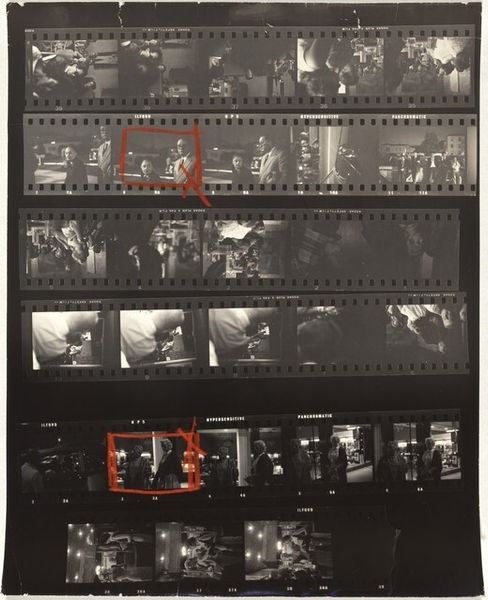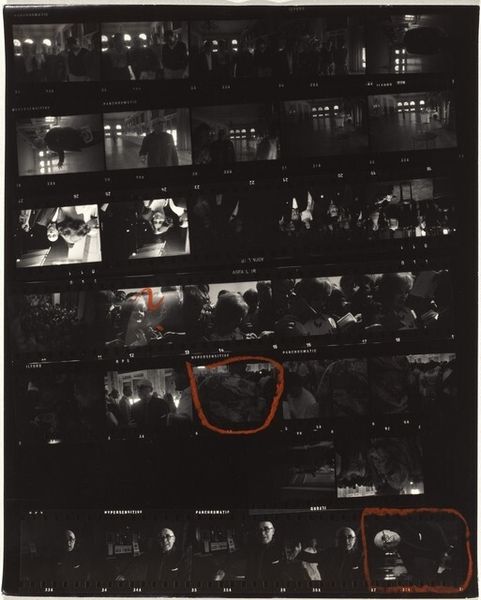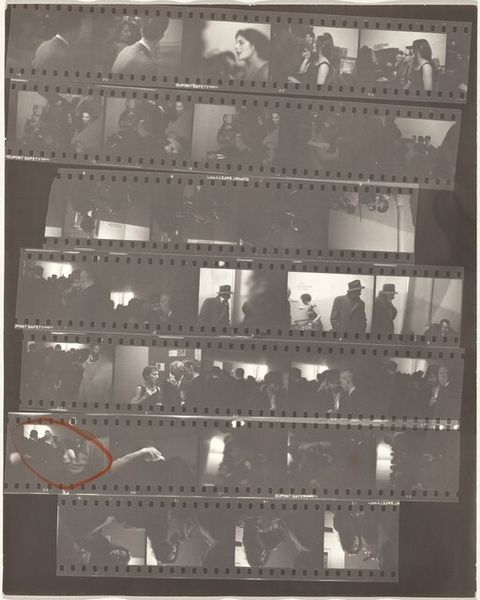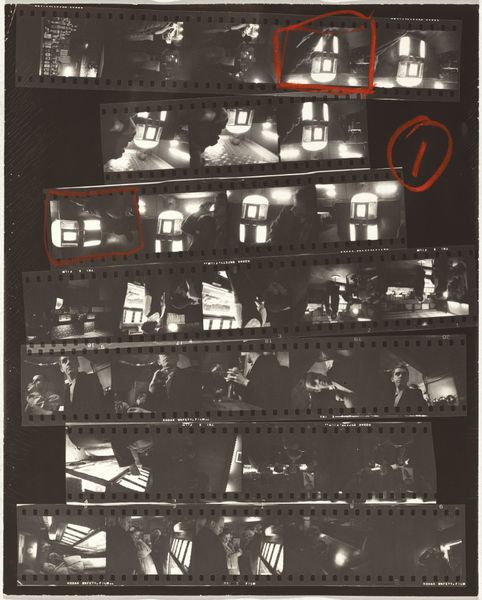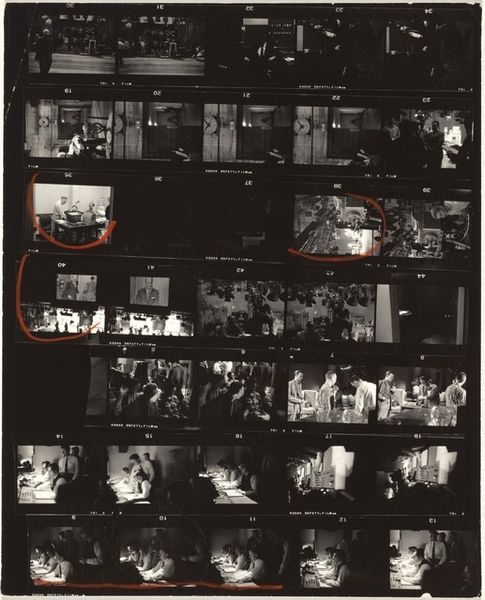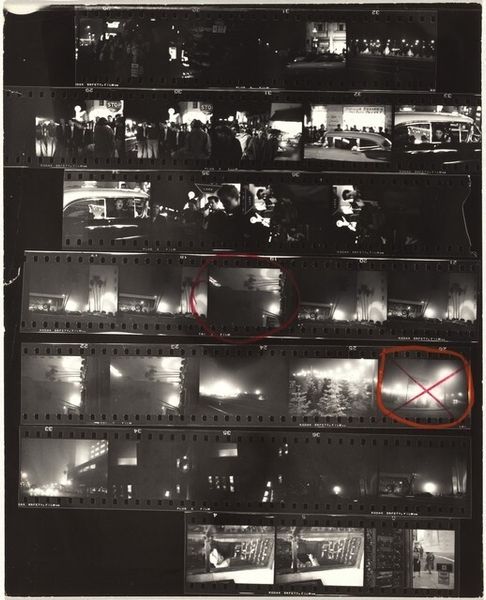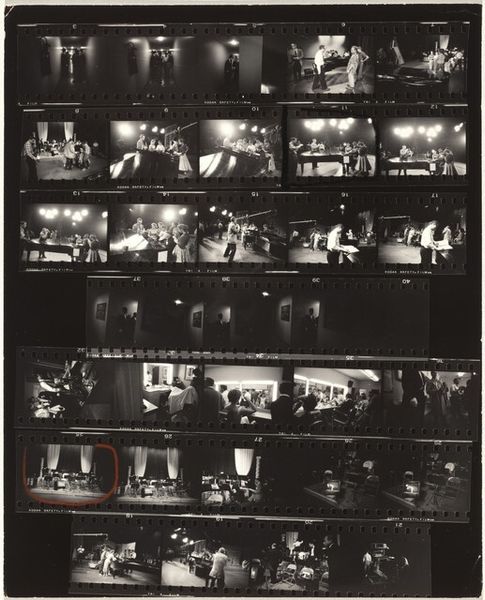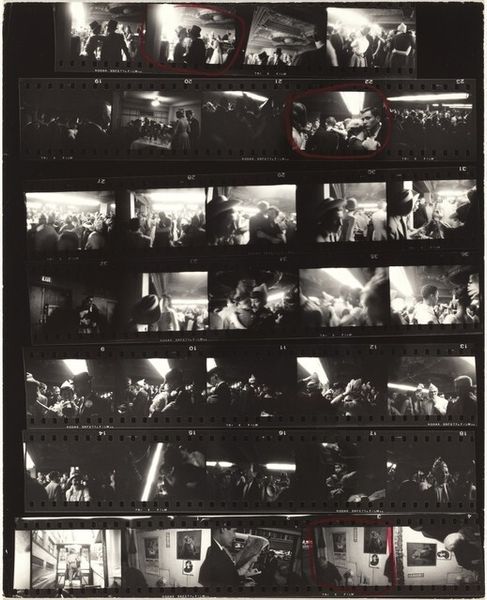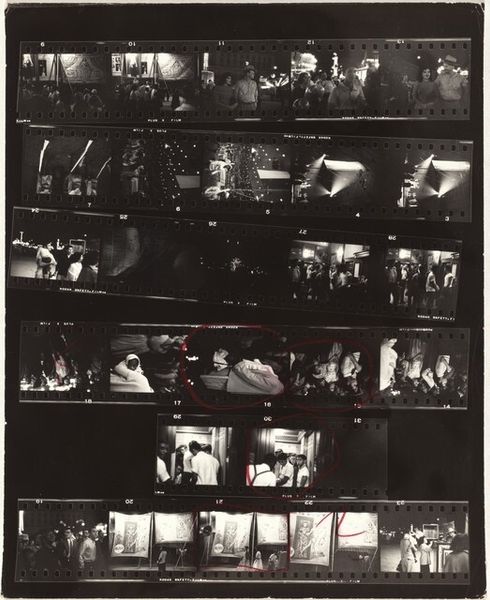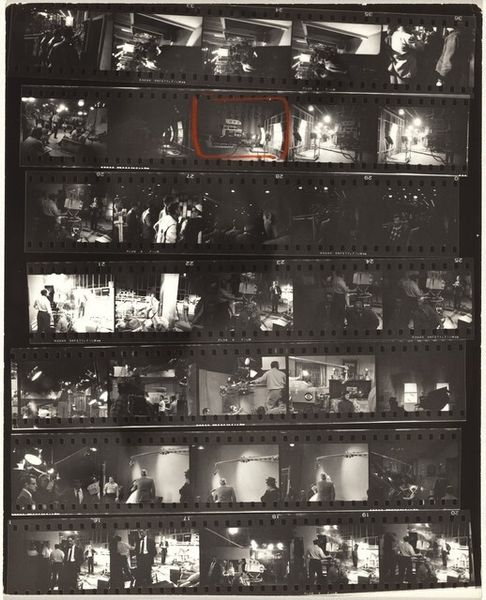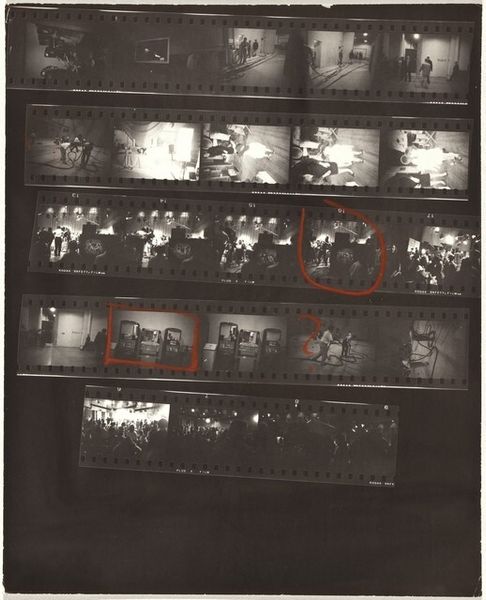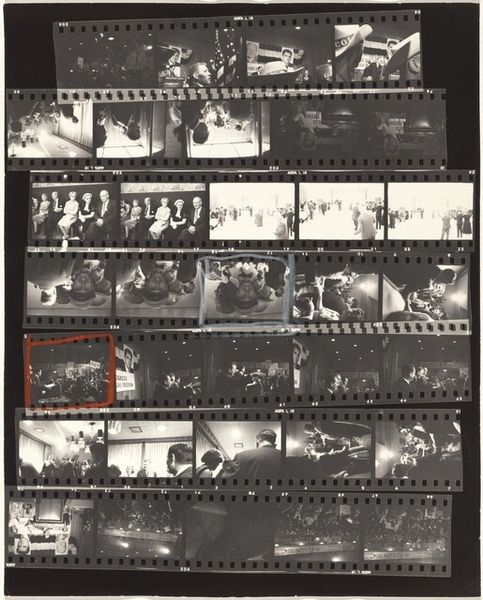
Guggenheim 478--Twentieth Century Fox film studio, Burbank, California 1956
0:00
0:00
photography
#
film photography
#
archive photography
#
photography
#
culture event photography
#
cityscape
Dimensions: overall: 25.3 x 20.5 cm (9 15/16 x 8 1/16 in.)
Copyright: National Gallery of Art: CC0 1.0
Curator: Here we have Robert Frank’s, Guggenheim 478--Twentieth Century Fox film studio, Burbank, California, from 1956. Editor: A filmstrip, full of contrasts, of a film set or studio, captured in monochrome! It strikes me as more about documenting an event. What stands out most is its rawness. Curator: I would note how Frank uses the film strip itself as a formal element, breaking the image into narrative segments. Observe how the stark blacks and whites heighten the fragmented storytelling of the Hollywood landscape. The composition guides us through light and shadow. Editor: I see a critical commentary about the film industry. The repetition, the darkness, the artificial lights; they create a sense of detachment. Curator: Consider how these elements evoke both a sense of spectacle and isolation, perhaps speaking to Hollywood's manufactured realities. His choice to present it as an unedited film strip, the red mark over one section of the reel, further suggests that. Editor: He seems to want us to understand the mechanisms behind what is portrayed as real; to expose the artificiality behind the scene. By selecting a set as a subject, he asks viewers to question the nature of illusion in American media. Curator: By embracing spontaneity in framing, Frank challenges us to question our assumptions regarding documentary practice and its role within the cultural landscape. Editor: His method invites reflection on both the visual language of cinema, and how social events or popular representations affect and mirror public perception of US society. Curator: Indeed, this work embodies his ability to fuse documentary realism with social commentary through acute formal decisions. It stands as testament to Frank’s complex visual vocabulary. Editor: And serves as a reminder of the film industry’s power to shape the stories, and in doing so, determine popular histories of our recent past.
Comments
No comments
Be the first to comment and join the conversation on the ultimate creative platform.

